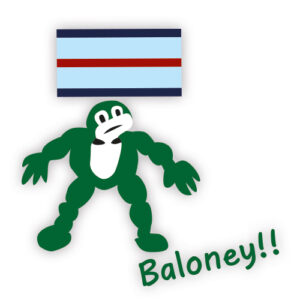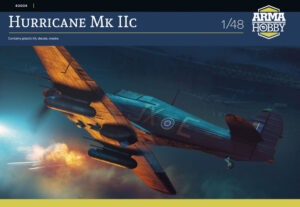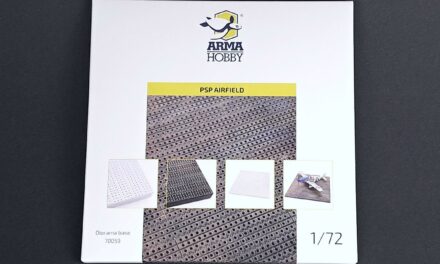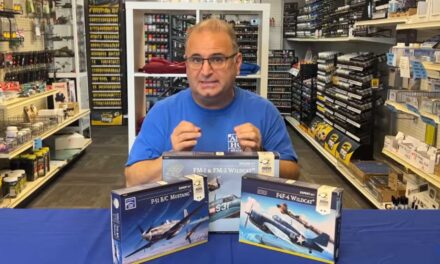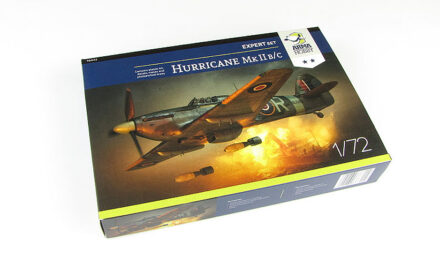Flip the Frog was officially listed as missing in 1933. Eleven years later, however, in 1944, he resurfaced in India as the mascot of Squadron Leader Charles Philip Nelson “Ace” Newman DFC, the commander of No. 34 Squadron. Flip accompanied him on a Hurricane Mk.IIC, LB792, and doubtless brought good luck, for the aircraft and its pilot survived the heavy fighting for Kohima and Imphal. In recognition of his leadership during this operation, Newman received his second Distinguished Flying Cross.
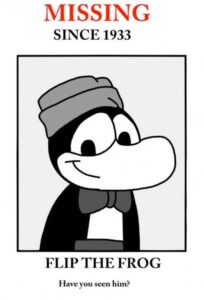 I regularly wonder where pilots took inspiration for the individual markings of their aeroplanes, and sometimes I am able to determine the source. Flip the Frog was the hero of animated cartoons and comic books that were popular in the Anglo-Saxon world at the beginning of the 1930s. He lost the fight for fame with the characters created by Walt Disney, but even today we can still watch old MGM films starring Flip the Frog on YouTube. For those interested, the following is a link to one of them, entitled “Bulloney”:
I regularly wonder where pilots took inspiration for the individual markings of their aeroplanes, and sometimes I am able to determine the source. Flip the Frog was the hero of animated cartoons and comic books that were popular in the Anglo-Saxon world at the beginning of the 1930s. He lost the fight for fame with the characters created by Walt Disney, but even today we can still watch old MGM films starring Flip the Frog on YouTube. For those interested, the following is a link to one of them, entitled “Bulloney”:
It may well have been that, when Charles was a young boy and Flip was in his heyday, this short film became such a joyful and memorable experience that he chose to paint the character’s likeness on the fuselage of his Hurricane ten years later.
At the time, the pilot still had a long career ahead of him in the RAF. Before being posted to the reserves as a Group Captain in 1968, he served, in the years 1949–51, as commander of No. 4 Squadron, which was stationed in Germany and operated DeHavilland Mosquitoes and Vampires. From 1957 to 1959, he was commanding officer of No. 207 Squadron, flying Vickers Valiants. Just previous to this appointment, he had taken part in quashing the Mau Mau Rebellion in Kenya. In 1955, in recognition of his service in combatting the Kenyan independence movement, he received the Order of the British Empire (OBE).
They may not look the same, but similarity in appearance and name is obvious. Left: snap-shot of cartoon, right: insignia reconstruction from aeroplane photos.
The Hurricane with the Frog Over Burma
The topic of Flip the Frog and the bio of the pilot would not have such outstanding importance if we had something more interesting to write about the paint scheme of LB792. It so happens, however, that the aircraft itself looked just like any other Hurribomber from that period and place. Two photographs of the aeroplane can be found in Norman Franks’ “RAF Fighter Pilots Over Burma”. Like the majority of photographs from the Burmese theatre of operations, they are far from technically perfect, however their quality is sufficient to recreate the paint scheme of this particular fighter-bomber without any difficulty.
Two photos from the book „RAF Fighter Pilots Over Burma” by Normana Franks, posted her for disscusion of aeroplane markings. Hight quality photos you can find in the book available here.
I can recommend N. Franks’ book to anyone who is interested in the history of the South East Asia Command (SEAC). Importantly, it also helps answer the question as to why the Hurricane was produced for so long. No. 221 Group RAF, of which No. 34 Squadron formed a part, had eleven out of its sixteen units armed with Hurricanes as late as in the first half of 1944, and eight out of fifteen at the beginning of 1945. The aircraft was flown by operational units until mid-1945. Without a doubt, the reasons for such enduring and extensive use were many, one of them being the Hurricane’s widely spaced landing gear, which was ideally suited to the low-quality airstrips typical of the region. Further, it was considered that better fighters were more needed in other theatres.
The first Spitfire Mk Vs appeared in India only in September 1943. What is more, the planned refitting of fighter-bomber units with Hawker Typhoons never went ahead, while the adoption of the Republic P-47 Thunderbolt – a tangible qualitative improvement – sometimes occurred so late that not all squadrons had time to use them in combat. All this brings me to my main argument, namely that, apart from the Battle of Britain, in which the Hurricane played a key role, the aircraft shouldered the largest part of the burden in the Indian and Burmese campaigns.
One of Arma Hobby’s guiding principles is to offer in its kits properly documented markings, and we therefore rely solely on photographs – not on colourful silhouettes and profiles, which following even the briefest of verifications often turn out to be the product of the imaginations of their creators. In the present instance, our goal was to present a Hurribomber Mk.IIC with SEAC markings – and one which no other model-making company had previously manufactured. SEAC operations have never been one of my pet subjects, and so initially I thought there would be no problem with finding a dozen or so options from amongst which a selection could be made. As it transpired, however, locating a photograph that would show complete aircraft markings was an extremely difficult task. After many days spent leafing through books and combing the internet, I found barely two aeroplanes satisfying our requirements. Thus, I would like to turn to you with a request for help: if you have any photographs of Far Eastern versions of the Hurricane and would be willing to share them, I would be much obliged if I could use them in our upcoming projects. The Burmese exploits of the Hawker Hurricane will definitely return in successive of our kits, also on a scale of 1:48.
English Translation by Maciek Zakrzewski
Check also:
Huragany nad Birmą – działania bojowe 113 dywizjonu RAF 1944-45
Model maker for 45 years, now rather a theoretician, collector and conceptual modeller. Brought up on Matchbox kits and reading "303 Squadron" book. An admirer of the works of Roy Huxley and Sydney Camm.
This post is also available in:
 polski
polski




